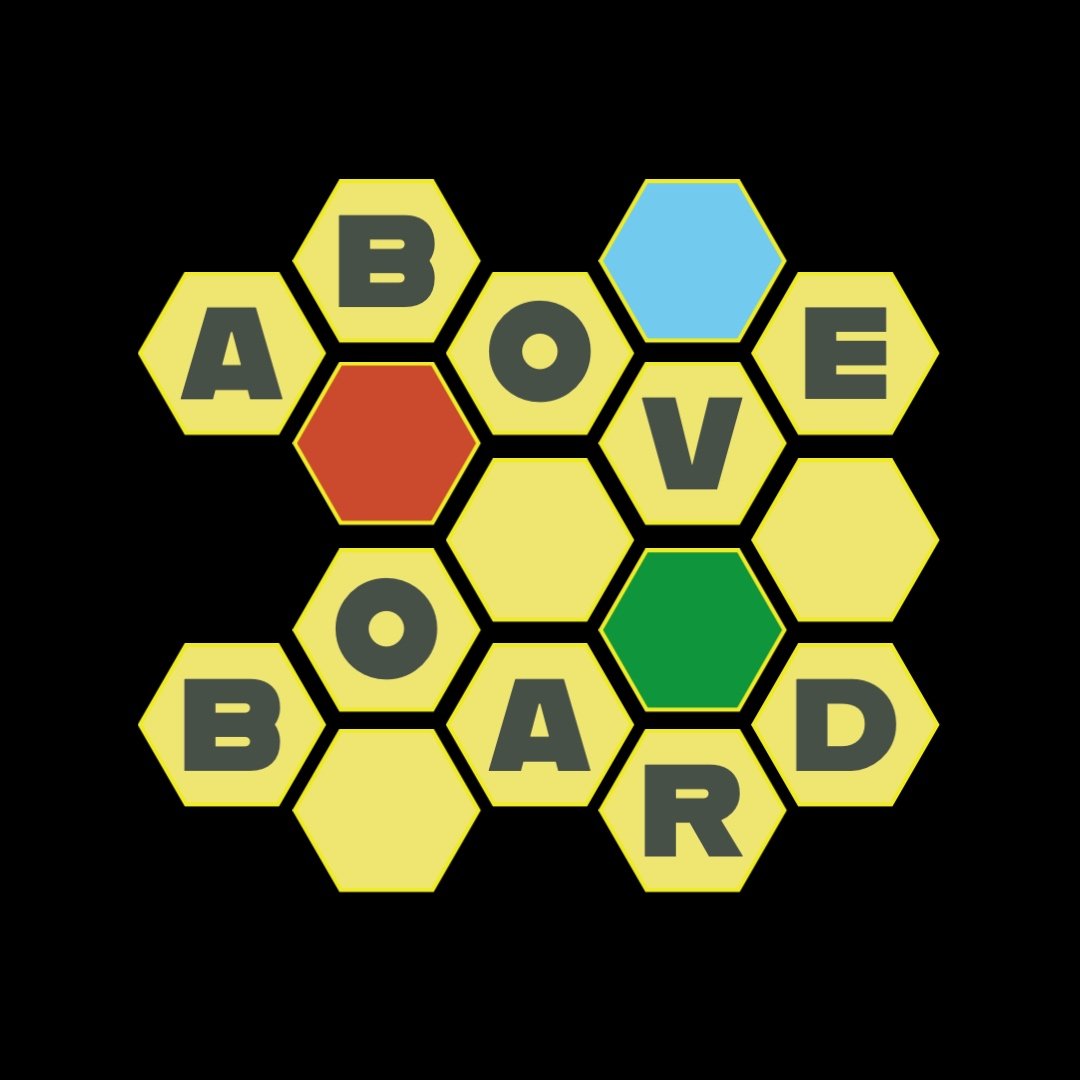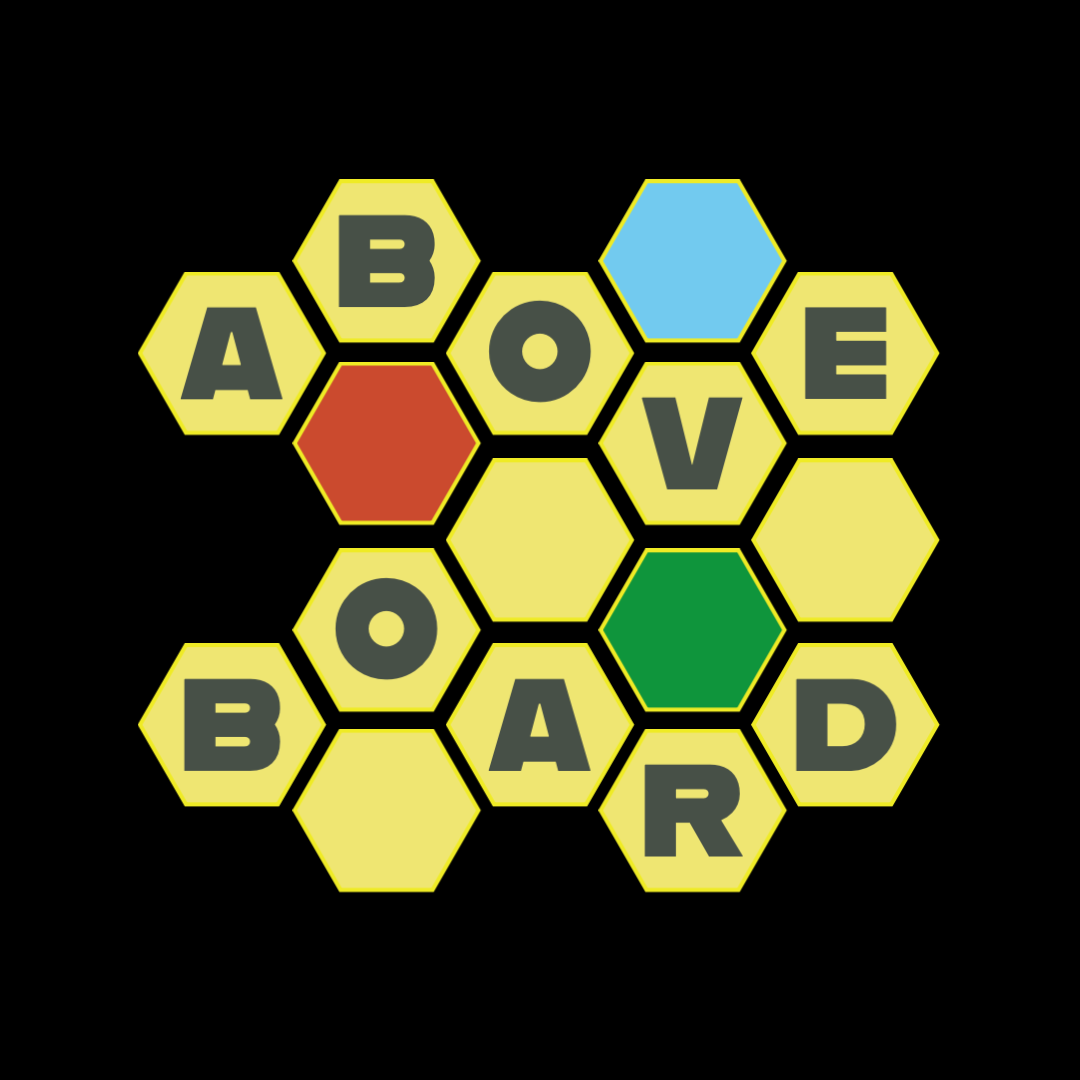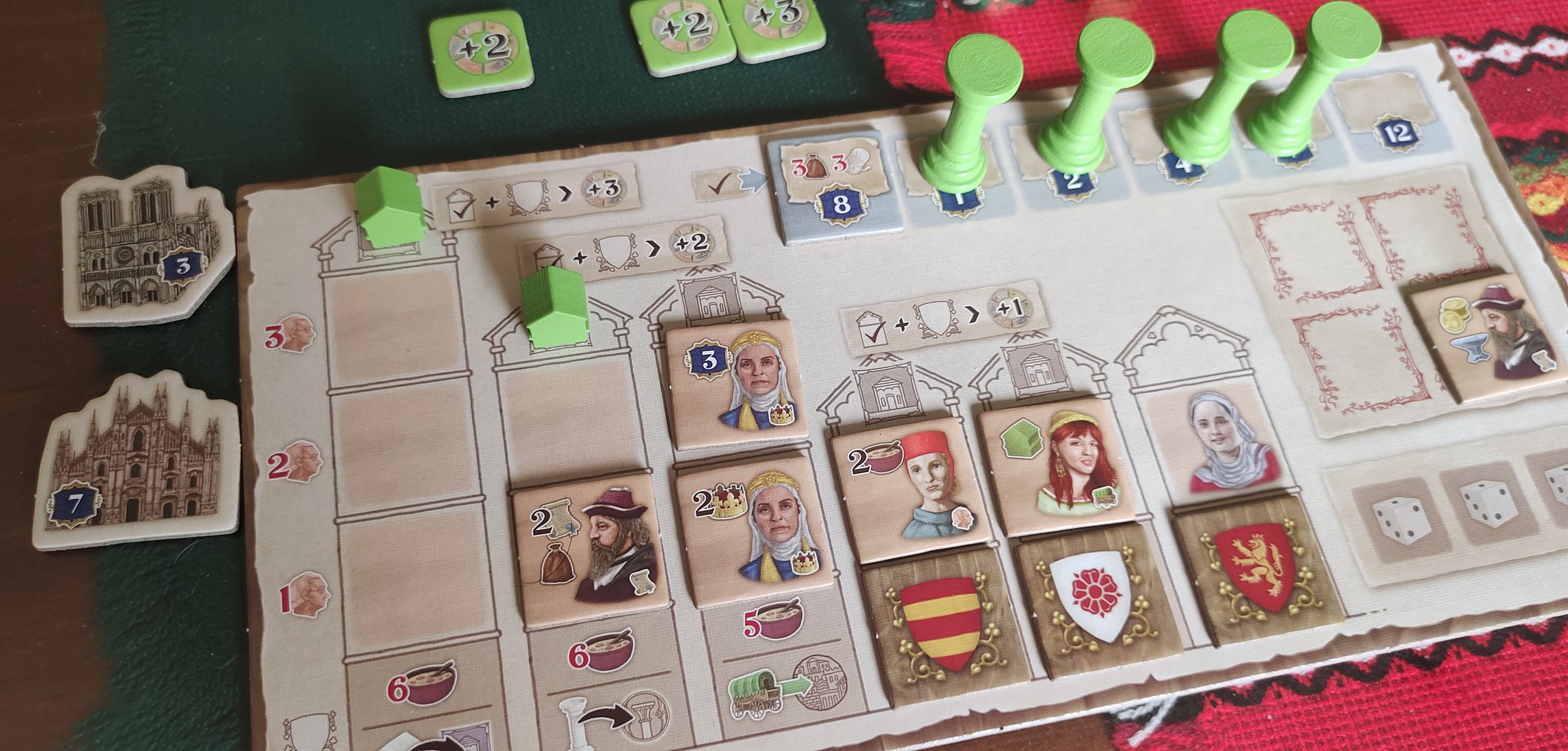Takahe’s Solo Den: Tiletum
1 - 4 Players 60 - 100 Minutes Age: 14+
Designers: Simone Luciani, Daniele Tascini
Artists: Giorgio De Michele, Zbigniew Umgelter
Publisher: Board & Dice
The best “T” game in series?
I think this review will surprise hardly anyone who knows my board gaming tastes – Tiletum was -for me personally- probably the most anticipated game of 2022 and thanks to Board & Dice, this game managed to hit the retail stores shortly after Essen, without having a need to go through crowd funding. And to be honest, that’s my preferred way (retail) of getting games BY A MILE.
I am honestly so happy that my favourite designers are still releasing their new games through normal retail channels – Uwe, Pfister, Suchy, Tascini… euros from these gentlemen are among my most played games and knowing I can look forward to their new releases without going through a torture called crowdsourcing… it’s just a different level of calm and zen and piece. The other aspect of retail releases vs. crowdsourced ones is that you have a very good guarantee that these games will be solid. They are not experimental nor over-bloated with tons of minis, just a good old-fashioned cardboard, chunky pieces and cards. And that’s exactly what you’ll find inside the box of Tiletum.
Muted colours and lots of beige - perfectly fitting for this euro
As the name suggests, Tiletum belongs to a family of “T” games, all of which were published by the same company. Now, which games belong to these series is up for discussion, but putting Tiletum next to Teotihuacan, Tekhenu and Tawantinsuyu makes it look like it belongs. And yes, I can hear some of you complaining about Tawa not being designed by Tascini… but whatever, you are entitled to your own opinions of course :-). Going back to Tiletum– the look and the feel, the rulebook, complexity, mechanisms, fiddliness… if you have played any of the previously mentioned euro gems, nothing will surprise you here. This is a dry, beige, point-salady, medium complexity euro that mixes several more-or-less known mechanisms in a well designed and -as expected- highly enjoyable package. And that’s PRECISLEY what I want from a game in “T” series….
For those of you who had a chance to play Tekhenu, the core dice worker selection in Tiletum will certainly look familiar. And there is a reason for it – apparently, the first concept of Tiletum served as a foundation for Tekhenu so not surprising that particular mechanic is quite similar between these two. However, if you found the rules around the rotation of the action wheel in Tekhenu slightly confusing and fiddly (all the different phases, adjusting the dice positions, adding new dice mid-way through… lots of rules), you will be happy to hear that no such thing is present here. You simply rotate the wheel after each round, draw 8 dice out of the bag, roll them and place them around the wheel.
Proven and tested mechanisms with a pinch of novelty
In terms of functionality, dice have a dual purpose in Tiletum – the position you take the dice from dictates the action you take, the colour means what kind of resources you’ll get and the number of pips is the number of resources you will receive. Now, taking lots of resources (dice with 4+ pips) has obviously a counter-effect – you will have less action points to spend on the chosen action itself. You take 5 bricks – you will only have 2 action points to use on whatever you’ve chosen to do. Looking at my collection of “T” games, I don’t remember seeing Action Points in any of the previous titles so despite sticking to their guns, the designers are not afraid to introduce some nice new concepts to freshen up their portfolio.
So, action points. Let’s talk about action points (AP) and how much they impact the gameplay. In a broad sense, AP can be considered as a new resource you can spend when doing actions. Since this resource is abstract, the game comes with cardboard tokens for you to use in case you have tons of AP and want to keep track of how many you’ve got left (I myself am very grateful for these physical tokens!). As a new resource, you will be using AP to execute as many actions as you can for whichever type of action you have chosen.
New resource keeping the game fresh
The best way to illustrate how AP work is to give you an example: you take a gold dice of a pip value 3 from an action spot dedicated to the merchant action. You get 3 gold, 4 AP. You use one AP to move your merchant meeple from one city to the next one. You use another AP to move him further. And you spend the last two AP on building a house and collecting a bonus token (onto that later). Done. Each action spot of the action wheel offers you similar variety of things to do: taking bonus/helper tokens and adding them to your warehouse, moving your meeples, placing stuff on the board, claiming people and contracts etc. Each of these cost 1 AP, some even more (if you are for example taking contracts from the market).
Since I have only briefly mentioned some of the actions you can take, let me elaborate on that topic a tiny bit more - the game offers a nice variety of things to do and places to go – as mentioned already, you can move your architect and merchant meeples on the map to build houses and pillars, claim bonus and helper tiles, you can house various villagers in your estate (each of which gives you a unique one-off and permanent benefits), you can claim contracts for fulfillment… simply put, plenty of chunky decisions for you to make.
Not all actions are equal…
There is however one action that feels a bit out of place, almost like an afterthought – and that is a king action. This action does only one thing – moves your disc on the king’s favour track. The position of your disc will then, at the end of the round, define who will go first the next one and how much VP’s you score or lose between those two rounds (that’s right – through corruption tokens revealed after each turn, you potentially lose 1-2 VP). The thing is though – no matter how far you get on the track, the gains are simply not worth wasting your turn (one of 3 you get each round) when you can do a lot more and claim a lot more by just doing all the other actions. And it’s these other, multi-choice actions, that also allow you to trigger chunky combos, expanding your turn beyond what you initially thought was possible.
Remember those bonus/helper tiles you can claim from various places around the board as well as from the action wheel itself? These tiles allow you to either collect additional resources or do additional actions on top of the original one you’ve just picked. Plus, you can execute them at any time during your turn. But you don’t have to – you can store them in your limited warehouse for later usage, really up to you. No matter your decision though, these tiles are -at least for me- the bread and butter of this game’s FUN factor. I absolutely LOVED triggering combos using helpers and bonus tiles; sometimes even choosing the main action spot not because it was the best option for me but because it had the best and most useful bonus tile, expanding my turn beyond what was possible with just the chosen die.
Fun solo mode from an established designer - a safe bet that pays off
Furthermore, there are several free, any-time actions (such as helping build Cathedrals, placing crests onto your board etc.) you can do during your turn and these too can make you chain your actions. Yeah – combos is what makes Tiletum shine above the rest of “T” games and pretty much drives your addiction from the moment you take your first helper tile into your possession and use it.
All of the above of course need to be fun even in solo game and I am happy to report that David Turczi -yet again- did not disappoint and his solo bot in Tiletum is probably his best one yet. Despite having a separate rulebook to read, with pages and pages of text, the automa in Tiletum is actually very straightforward and pretty easy to run, with almost no ambiguity as to what it needs to do. PLUS, the designer was kind enough to give us a life-saving solo player aid at the back of the solo rulebook, which I think makes this solo very accessible to even those who are usually not fans of his complex designs.
One of the best mid-weight complexity bots on the market
Now, as expected from David’s bot, the automa in Tiletum tries to mimic the human decision making as much as possible, while also being forced to collect resources and pay for stuff – just like human player does. What really makes this bot shine though, is how he concentrates on the scoring objectives of each of 4 fairs that will happen during the game. At the end of each round, there is a fair taking place in one of the cities and if you want to score some big VP, you better get your merchant there, or build a house in the location so that you don’t miss out.
These fairs then score various things you’ve achieved so far – contributions to cathedrals, how many contracts have you fulfilled, how many pillars and houses have you built etc. Coming back to bot, during the initial setup, you create a line of 6 solo cards automa will be using for decision making. 4 of these are directly tied to the objectives on the display. What this means is that solo bot does not act randomly and actually tries to achieve these objectives, which gives him a very human-like and authentic feel.
Another big plus of this design is how it can be scaled, difficulty-wise. There are additional solo cards you draw during the setup that give the bot an upper hand in one aspect or another (he score additional points for helper tiles, gains additional resources etc.). You can start with just one of these for easy game, 3 for normal… or you can use all (I think 9 cards?) if you want… a very elegant and flexible way of tweaking the difficulty, and a clever design of solo in a nutshell.
The most accessible “T” game to date
Gameplay wise, I have pretty much zero complains as to how the solo game flows – the bot does not do any combo actions triggered by helper tiles and only collects a very small sub-set of them, so if you were afraid, you’ll be spending minutes managing the never-ending chain of his actions, you can relax now. This is not Wayfarers of South Tigris bot which combo-ed you to oblivion – solo bot in Tiletum is very efficient yet very human-like, fair, and hugely satisfying to play against!
Having experienced a variety of progressively evolving bots in a series of “T” games by now, the solo opponent in Tiletum is by far the smoothest automa out of all of them and makes this game that much more worthy for solo gamers. And I guess that’s my ultimate message here – if you were always curious about Tekhenu and Teotihuacan but were scared of their complex bots, Tiletum is a perfect entry game for you into these series. Plus it is a fantastic mid-weight euro in general. Perhaps too beige and uninspiring looking – but an immensely fun to play!









